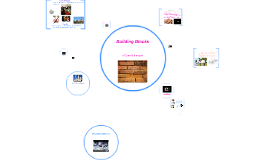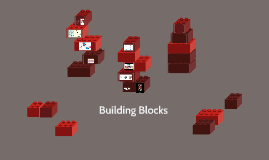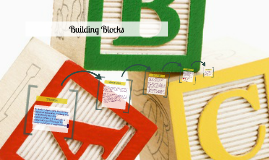Building blocks
Transcript: 6 License combinations Attribution-NonCommercial CC BY-NC Attribution-NonCommercial-ShareAlike CC BY-NC-SA Attribution-NonCommercial-NoDerivs CC BY-NC-ND By YOTA UK (Own work) [CC-BY-3.0 (http://creativecommons.org/licenses/by/3.0)], via Wikimedia Commons This license allows for redistribution, commercial and non-commercial, as long as it is passed along unchanged and in whole, with credit to you. Attribution-NoDerivs CC BY-ND This license lets others remix, tweak, and build upon your work non-commercially, as long as they credit you and license their new creations under the identical terms Detail 4 BACKGROUND MUSIC Bob Charnes Creative Commons Attribution-Noncommercial-No Derivative Works 3.0 United States License. Based on a work at wiki.creativecommons.org. Permissions beyond the scope of this license may be available at http://audiofarm.org/bobcharnes. Attribution-ShareAlike CC BY-SA This license is the most restrictive of our six main licenses, only allowing others to download your works and share them with others as long as they credit you, but they can’t change them in any way or use them commercially. This license lets others remix, tweak, and build upon your work even for commercial purposes, as long as they credit you and license their new creations under the identical terms. This license is often compared to “copyleft” free and open source software licenses. All new works based on yours will carry the same license, so any derivatives will also allow commercial use. This is the license used by Wikipedia, and is recommended for materials that would benefit from incorporating content from Wikipedia and similarly licensed projects. Uploaded by FesatFer Jogging Cats in work funny cats funny video. Musik: (CC BY-SA) zikweb_-_B34.mp3. Video: (CC BY-SA ... Detail 3 By Mannbro (Own work) [GFDL (http://www.gnu.org/copyleft/fdl.html), CC-BY-SA-3.0 (http://creativecommons.org/licenses/by-sa/3.0/) or CC-BY-2.5 (http://creativecommons.org/licenses/by/2.5)], via Wikimedia Commons Nov 20, 2011 - Uploaded by Kerim Friedman CC BY-NC-ND 2.0 Music info: Jaki's Walk (mp3) wr. ... The World's Most Stubborn Dog (Saint . People may use your art or creative work if they give you credit. SHARE ALIKE Building blocks of Creative Commons (cc) your art may be used by others but they may not charge for it. Jan 31, 2013 - Uploaded by Kitty Cro How To Draw A Cute Kitten Face - Tabby Cat Face Drawing CCby HowtoDrawAndPaint 131,425 views · 4:51 Apr 13, 2012 - Uploaded by condemnedscorpion My temporary kitten, temporarily called Baby because she was the ... Creative Commons License . By Stephanie from Boston, MA, USA (Flickr) [CC-BY-ND2.0 (http://creativecommons.org/licenses/by/2.0)], via Wikimedia Commons NON-COMMERCIAL NO DERIVATIVE your art work may be used by others but not changed. This license lets others distribute, remix, tweak, and build upon your work, even commercially, as long as they credit you for the original creation. This is the most accommodating of licenses offered. Recommended for maximum dissemination and use of licensed materials. By Fabien Bodard [GPL (http://www.gnu.org/licenses/gpl.html)], via Wikimedia Commons you are may be used and changed but but if it is distributed they must use the same license you used. By Baskrommenhoek (Own work) [CC-BY-SA-3.0 (http://creativecommons.org/licenses/by-sa/3.0)], via Wikimedia Commons ATTRIBUTION Attribution CC BY Detail 2 Detail 1 This license lets others remix, tweak, and build upon your work non-commercially, and although their new works must also acknowledge you and be non-commercial, they don’t have to license their derivative works on the same terms.

















